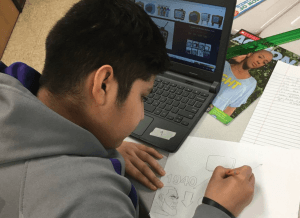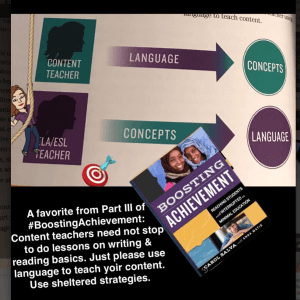Writing! ELs need to learn to write but they also need to write to learn. And every one of them can do that. Listen to the show here or read my thoughts on this below:
This podcast episode and blog post are all about writing with English learners. My focus for reflection is about how any English learner (pre-literate or nearly fluent) can write… and also how all of them can use writing to propel their learning. This picture is a student in Emily Francis’ class in Concord, NC. Emily is an EL teacher hero who began her career in Elementary and this year is teaching high school. (You’ll want to check out her blog and her story!)
I have this picture because Emily and other Twitter PLN members contributed ideas about writing with SLIFE in our weekly twitter chat (thanks everyone!) Many of those posts are included in the Twitter Moment at the end of this blogpost.
In the show I mention Abydos International, formerly the NJ Writing Project. So there is the link to their services. I’m not doing the trainings anymore but I keep my certification current. You can’t get better training for your writing teachers than Abydos.
Content Area Writing
What can writing look like in the content class?
So writing in Math can look like a journal where students reflect on their learning. That can be with frames such as “I noticed…” and “I solved that by…” I had the pleasure of being a parent to a child who was in a language rich math classroom. Anthony’s homework always included a reflection piece. There were less calculations and more writing about math and thinking about how things can be solved. The EL scores took a huge jump in that class because the teacher, Joseph Maurer, understood how to use language to teach math. This is a video that includes reflections from a new math teacher and also some reflections from the students in Mr. Maurer’s math class. They are talking about how much conversation there is in their math classrooms and why it is important to their learning. You can see how an English learner would be gaining more and more language and literacy (and knowledge of math) in these classes. And how they should be able to write some reflections. The two big ideas for this PD video are reviewing your objectives with the class (with attention to the STUDENTS using the vocabulary) and a Social Contract so that students feel safe collaborating in class. For more on these ideas, check out this blogpost.
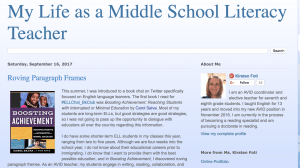
In the English Language Development (ELD) Classroom
When we think about the writing process, we should consider that every child can participate in all stages. if you are not sure how to include them, look at this Booksnap of pages 86 &87 of Boosting Achievement. (quick thanks to Tara Martin for the idea of Booksnaps!) The table in this photo offers a way for pre-literate students to engage in every stage of the writing process.
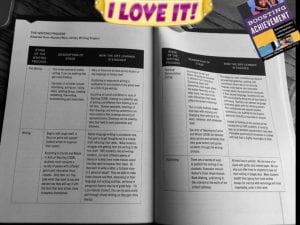 Sometimes teachers ask me how we can make students write in English. Well, the kids have taught me that we are taking the wrong approach when trying to make or force them to do anything. Another goal I have is to always look for opportunities where they REALLY care about their writing. One way to do that is to give kids choice and voice in what they write.
Sometimes teachers ask me how we can make students write in English. Well, the kids have taught me that we are taking the wrong approach when trying to make or force them to do anything. Another goal I have is to always look for opportunities where they REALLY care about their writing. One way to do that is to give kids choice and voice in what they write. Loading...
Loading...
 Loading...
Loading...
Thanks for taking the time to reflect on all of this with me. I hope it is useful in helping you include SIFE and all ELs in the act of writing.
Many hugs,
Carol
PS: Please check out all the places I will be presenting! 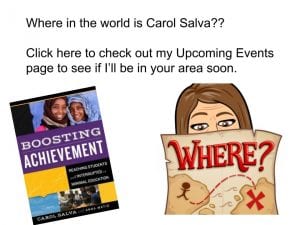 I hope to see you at one of them. Also, remember that I am traveling across the US and Canada to bring Boosting Achievement and Rapid Literacy training to you and your colleagues. Reach out if we can help!
I hope to see you at one of them. Also, remember that I am traveling across the US and Canada to bring Boosting Achievement and Rapid Literacy training to you and your colleagues. Reach out if we can help!
As promised, here is the Twitter Moment with even more ideas from our PLN
As teachers of English language or teachers of content, we should have a goal of engaging students in the writing process. Many educators out there agree with me. Check out this Twitter Moment from our last #BoostingAchievement Twitter chat. And join us every Thursday at 7pm CT for a quick 30 min #BoostingAchievement chat about raising the bar and supporting all ELs.
